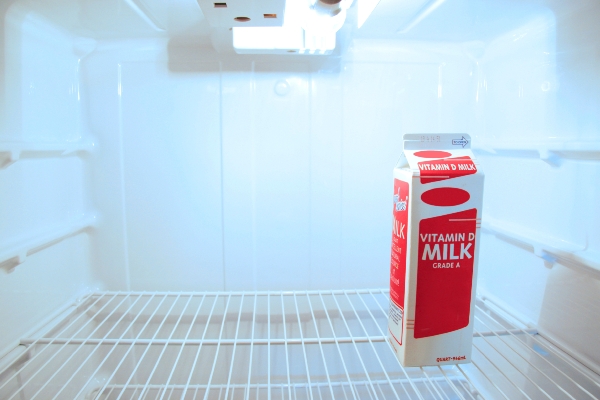When emergency strikes, fitness is often the first thing to go. Solution: Stay on track by letting go of “perfection.” The PN team shares their strategies for maintaining health and fitness during extra-stressful life transitions.
++++
A case of the “what-ifs”
When I made up my mind to get in better shape, I started with all the usual worries and stewed in what-ifs.
What if I lost my resolve and ate too much, or too fast, or the wrong stuff? What if the guys at the gym laughed at me? What if I couldn’t do the workouts? What if I couldn’t follow through?
Worst of all: What if I failed?
We’re all afraid of failure. Most of us manage to keep that fear in check as long as our lives are ticking along as per usual – even if our “normal” is pretty darned stressful.
But what happens when emergency strikes? How can we keep making progress with our goals when nothing in our world is going right?
Maybe you’re reading this as someone who’s suddenly been injured, or faced with a family disaster, or a new set of demands at work, and you’re wondering how in the world you’ll stay on track.
Or maybe you’re currently enrolled in Precision Nutrition Coaching. If so, you might be wondering how you’ll fare if trouble strikes. Will you manage to keep up with the scheduled habits and workouts?
In any case, you’re probably wondering how to live a healthy and fit lifestyle when life goes off the rails.
If so, read on to learn how some of our PN team members – people just like you – have coped and even thrived when the poop hit the fan.
My imperfect day(s)
It happened to me.
Before I joined the PN team, I was a PN Coaching client, and during that period, my dad got extremely sick and eventually died.
My parents lived several hundred kilometers away from me, so for the months that my dad was in the hospital, I did a lot of traveling back and forth.
Typically on these trips I stayed with my brother. The good news: He had a small gym in his condo. The bad news: The equipment was lousy; there was no proper barbell, and the single treadmill was often broken.
Not only that, but his kitchen was less than fully equipped for healthy eating. And that was putting it mildly. Most times, I’d arrive to find an expired carton of milk and a few cans of beer in the fridge, a jar of Nutella in the cupboard, and not a whole lot more.

Keeping a regular schedule was next to impossible during these visits. I needed to make myself available to help my disabled mother, and she’s used to doing things at her own speed.
Meanwhile, my mind was always racing. Back at home, I had a ten- year-old daughter and four contract jobs plus a demanding volunteer position to juggle. I was constantly afraid of dropping the ball on something important. And of course, I was always sad and worried about my father.
Ack!!!!
It seemed like the perfect set-up for fitness failure. Even if I’d wanted to, I couldn’t do the assigned workouts. And let’s face it – most days, I didn’t want to. I mean I really didn’t want to.
I’d been a couch potato for most of my life, and at that point, I hadn’t even discovered a form of exercise that I enjoyed.
So what kept me going during those months? How did I maintain my commitment to health and fitness, during PN Coaching and ever since?
The answer is simple – in theory. But difficult in practice.
I let go of perfection.
That’s right. I stopped trying to be perfect.
And the minute I did that, the whole idea of maintaining some kind of focus on fitness became a whole lot easier.
Accepting imperfection
To begin with, I allowed myself to think in terms of weeks rather than days.
If I couldn’t work out on the scheduled day because I was traveling, I’d work out the next day. Allowing myself to switch up my days meant I rarely missed a workout.
That’s not to say my workouts always looked like the prescribed PN Coaching workouts. Again, the whole idea of perfection had to go.
So how did I manage things? Well, if I couldn’t do the regular workout, I did a body weight workout, or intervals on the stairs, or I went for a run or a swim. Sometimes I signed up for a spin class.
Each day, I asked myself: If I can’t do what was asked of me, what can I do? What can I manage (physically, emotionally, mentally) now? Then I went and did it.
In all this, exerting myself was the goal.
Somewhere in the vast storehouse of information that is the PN site, founder John Berardi had said:
“The body only really knows hard work… not what was scheduled.”
During my months of upheaval, those words hummed like a reassuring mantra in my mind.
If I felt as if I had worked really hard, I called it a workout and earned my check mark for the day. If I didn’t feel as if I had worked really hard, I didn’t give myself a check mark. It was a simple as that.
Meanwhile, I also tried to add spontaneous activity into my days. I paced the hospital halls, parked at a distance and walked to the hospital door. I went for evening walks. Anything to stay active.
And guess what? It worked.
The pounds kept coming off and I kept getting stronger and fitter – until I actually looked forward to my workouts as a way of helping me handle all the stress! I even looked forward to the challenge of coming up with something I could do in tricky circumstances.
What a change from when I began with PN Coaching.

But don’t just take it from me. Here’s some advice from our Precision Nutrition coaches.
Power walks plus
When working with clients who are on the road, Coach Eileen MacRae suggests power walks.
Mind you, these aren’t just any power walks. These are power walks with a difference, incorporating squats, pushups, triceps dips, planks, and walking lunges. There’s a lot you can do with nothing more than a bench and some grass or a relatively smooth path.
“This gets all the muscle groups and helps you feel like you did something of value, not just a casual little walk. Done right, this can be a kick ass workout! This is my personal ‘on vacation’ workout.”
For clients who are a bit more advanced, she suggests interval runs between telephone poles. It’s an easy way for people to pace themselves, and each client can pick the number of poles for his or her personal work/rest ratio.
Chunking and minimalist exercise
Coach Brian St. Pierre takes a slightly different approach. He uses two main strategies: chunking and minimalist training.
By chunking, he means breaking up his training over the course of the day.
“Spend 5-10 minutes foam rolling and stretching in the morning, take a 15 minute brisk walk at lunch, and do 20 minutes of training anywhere else in the day – maybe an actual lift, maybe just some bodyweight work of pushups, pull-ups, plank variations, squat and lunge variations.”
It’s hard sometimes to find a whole hour. But anybody can manage 10 minutes.
Brian’s other solution is to “cut the fluff.” He’ll foam roll and warm up, hit a few big exercises with minimal rest and call it a day. Usually this takes 30 minutes, 45 at the absolute most.
“For example, I might do a bench press variation paired with a chin-up variation, followed by a pushup variation paired with a row variation and a core exercise. Three sets of the main movements, two or three sets of the accessory ones. Done.”
That’s Brian’s minimalist approach, and it works.
Barter days
It’s one thing to address our need for exercise. But when we’re under stress, it’s even more important to acknowledge the mental, emotional, and spiritual dimensions of what we’re undergoing.
Here’s an excellent strategy for that.
Create “barter” days, and trade out some (but not all) of your workout time for mental health time. For example, you might go to a 30-minute counseling session and then work out for half an hour, or meditate for ten minutes.
“I’ll give myself that freedom, if I promise myself I’ll bust my ass doing something, anything, for at least ten minutes afterward. Fun fact: it’s hard to stop at ten minutes.”
I’ve noticed that myself. When I really don’t feel like working out, I tell myself I’ll go and do just one set. The strange thing is that once I’ve managed a set, I usually want to keep going.
“More important fun fact: I would rather myself or a client address the mental stuff and get in a short amount of exercise than not look at the mental stuff, plan an exercise, not do it, feel bad about not doing it, repeat the process multiple times and eventually give up.”
Addressing the mental component is key to long-term success.
No weights, no worries
And when you’re stressed and stuck for time, creative problem solving (and a sense of humor) become key. No weights? No worries.
See what Coach Veronica Porterfield suggests for her PN Coaching newbies who can’t get to the gym.
(As you can see, there’s really no excuse for not working out with the equipment you have on hand. This woman takes functional daily movement to a whole new level!)
Perfection never happens in real life. We’re always going to be doing the best we can with what we have. And that’s okay.
We can still make progress toward our goals and still improve our health and our fitness – whatever’s going on in our lives.
Wrap-up
When life gets really crazy, try a few of these strategies to help stay active:
- Let go of perfection.
- Exert yourself in whatever way you can manage.
- Think in terms of workouts for the week; fulfill your weekly goal rather than stressing about a specific day.
- Build in daily activity.
- Try a power walk – walking with exercises built in.
- Work out with body weight.
- Use phone poles as markers for intervals.
- Sign up for a quick class – social interaction can help combat stress too.
- Choose whole body movements.
- Chunk your exercise into ten or twenty minute blocks.
- Take care of your mental and emotional health.
- Tell yourself you’ll work out for ten minutes.
- Work out at home with the equipment you have at hand.
- Think of fitness as your “anchor” rather than an obligation – it might be the only thing keeping you sane during tough times.
And whatever you do, try to make it fun. Because when life gets super crazy, fun and laughter are healing.
Eat, move, and live… better.©
The health and fitness world can sometimes be a confusing place. But it doesn’t have to be.
Let us help you make sense of it all with this free special report.
In it you’ll learn the best eating, exercise, and lifestyle strategies — unique and personal — for you.



Share